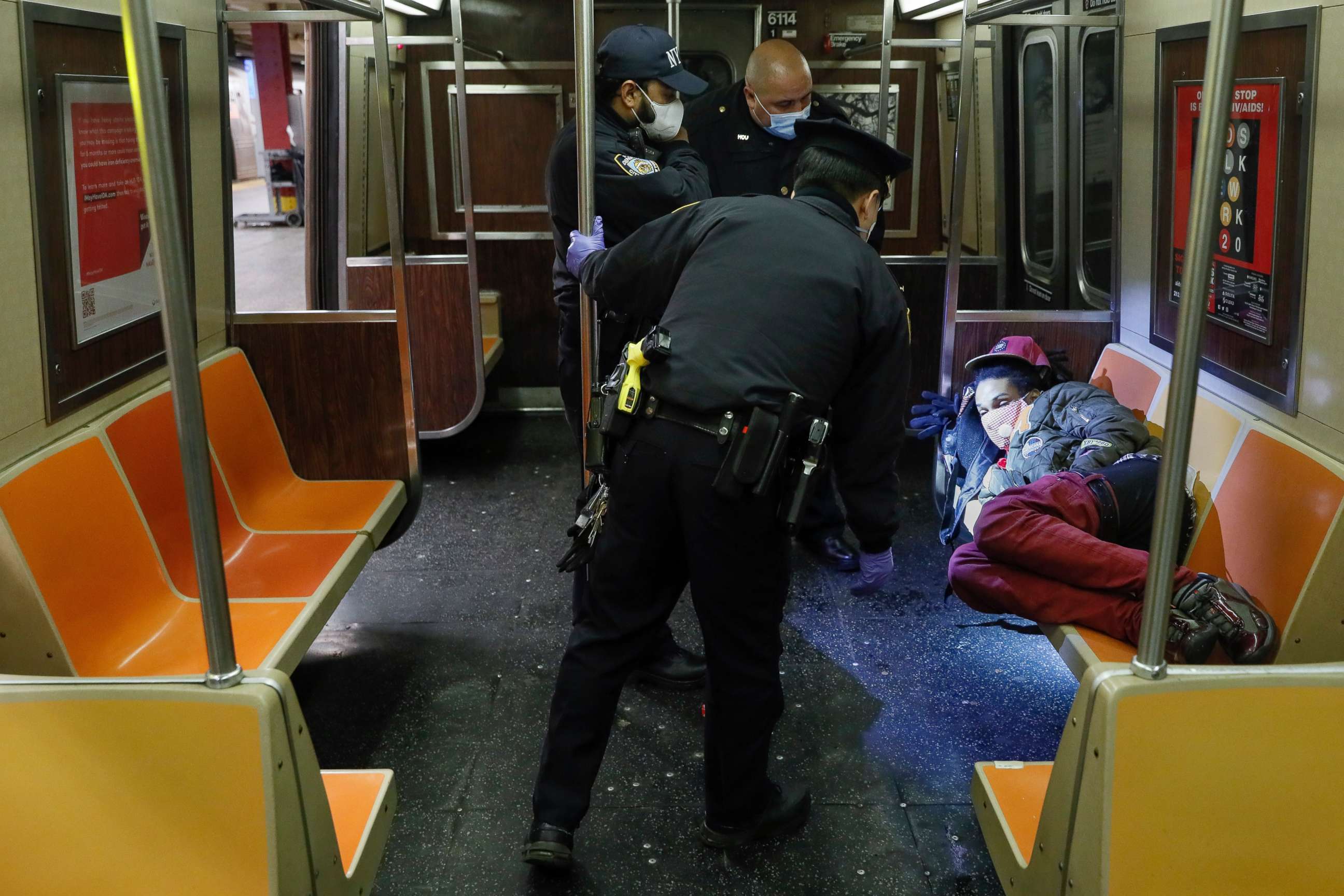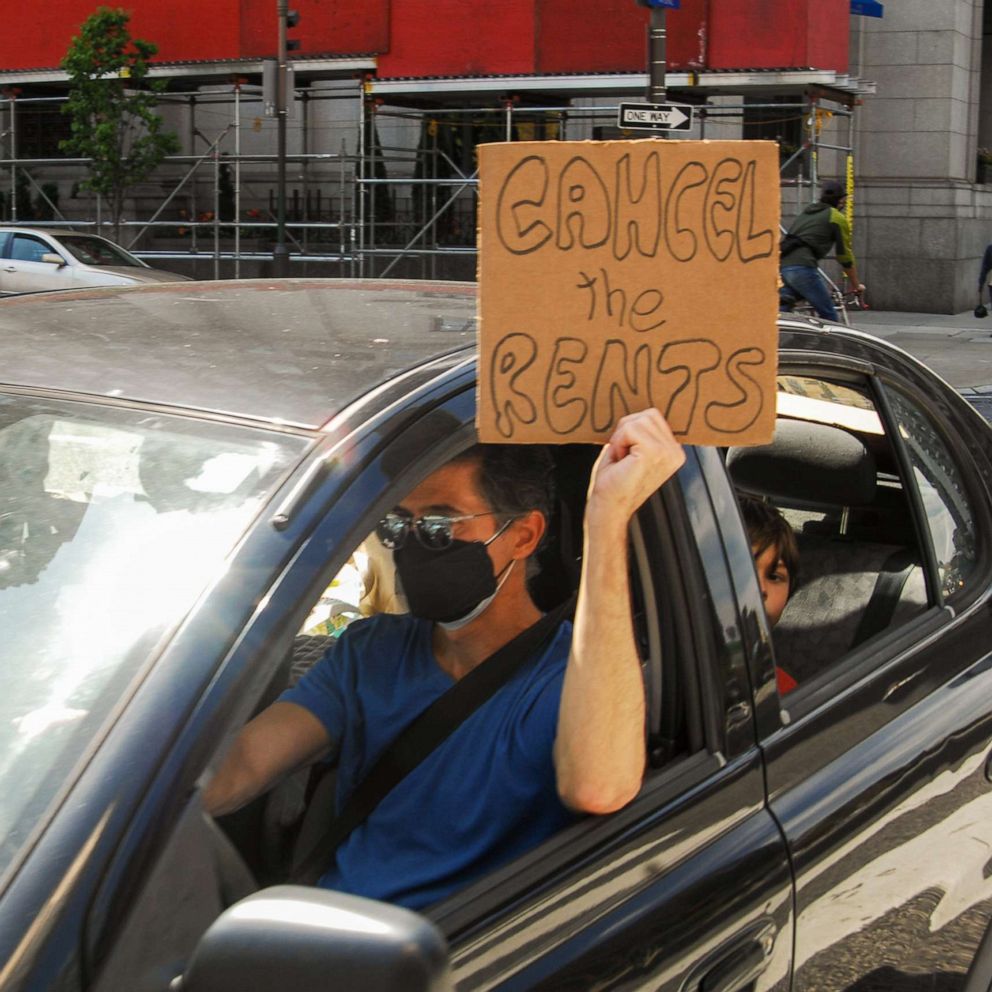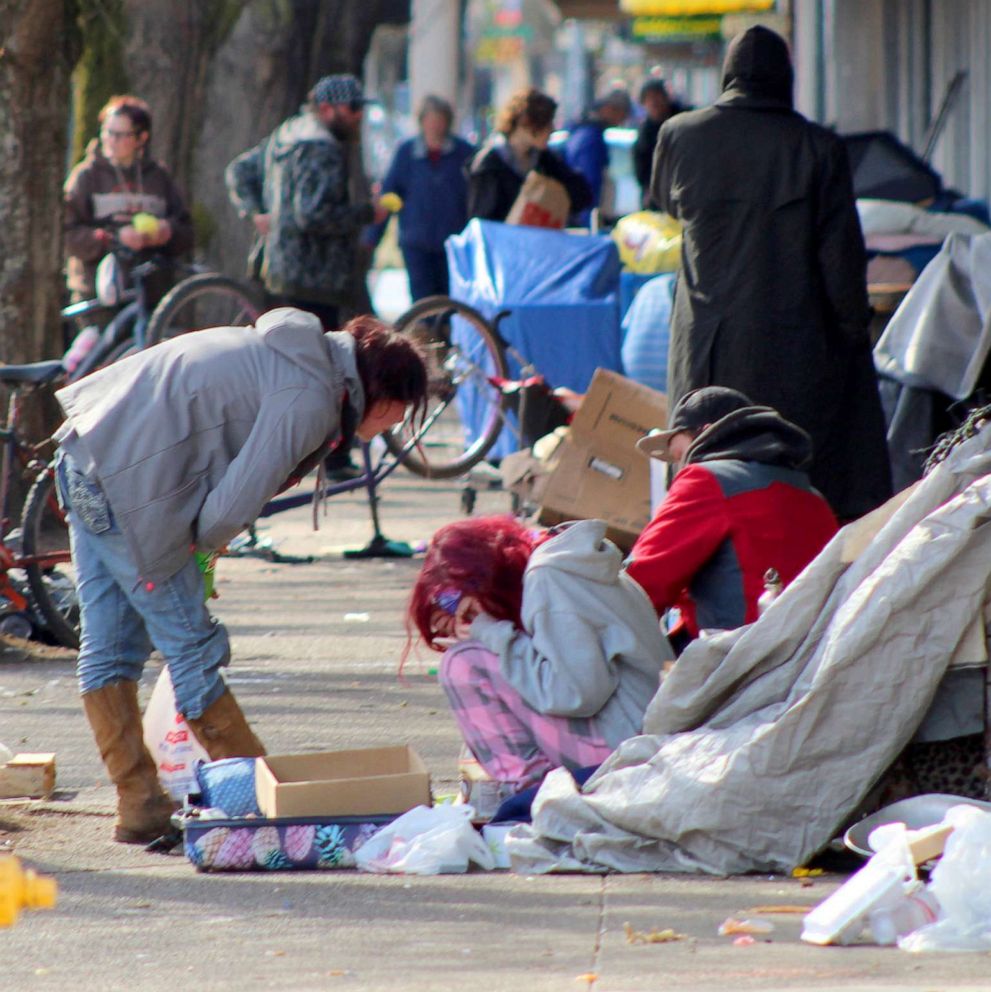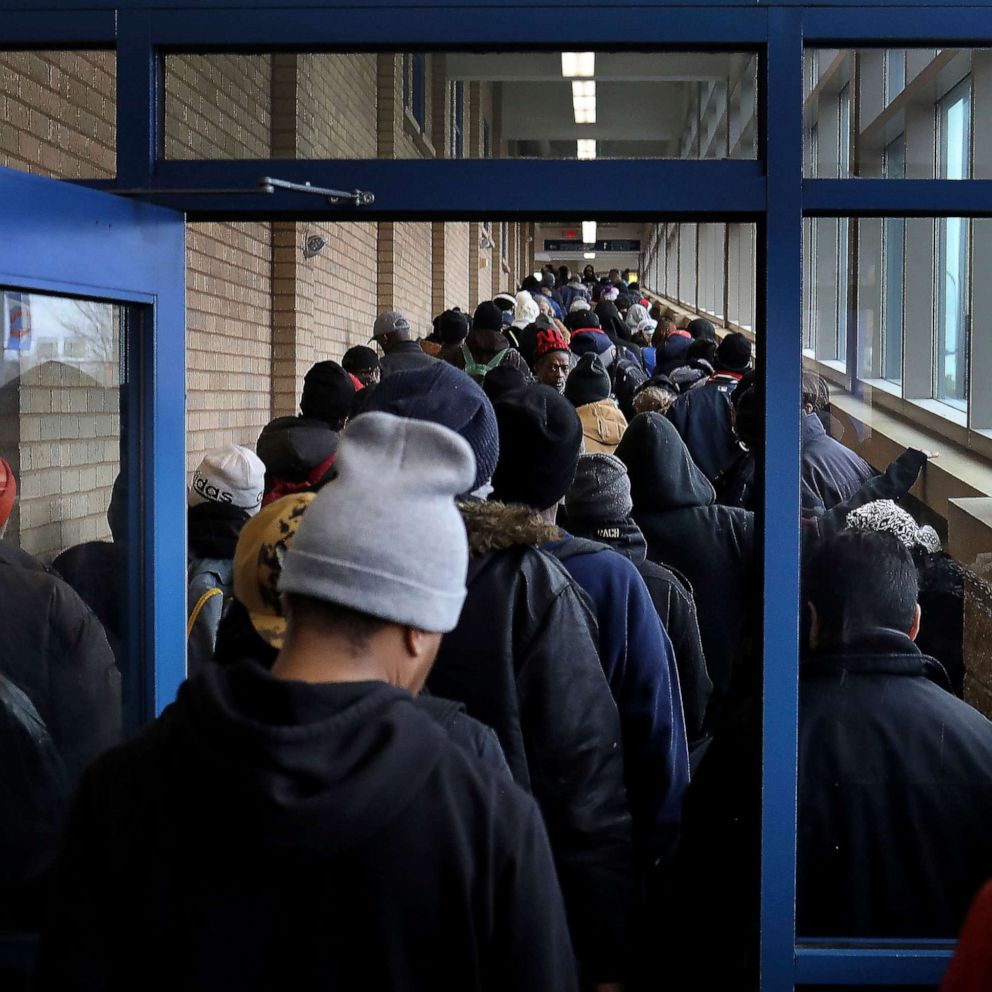As NYC subways prepare for disinfecting, homeless will have to find alternate refuge
“Everyone has to get off those trains,” said the NYPD's chief of department.
The New York City subway system will close overnight for the first time in at least 50 years when workers in the fight against COVID-19 begin daily cleanings of the system's 472 stations Wednesday.
To accomplish the cleanings, which will take place each day from 1-5 a.m. until further notice, authorities will remove scores of the city's homeless who have been sleeping on the nearly-empty trains.
At the 29 end-of-line stations, specially trained police officers from the city's Homeless Outreach Unit, accompanied by nurses, will remove people from the subway cars, said NYPD Chief of Department Terry Monahan. Most will be offered space at shelters, while nurses will decide whether someone needs to be taken to a hospital for their own safety, Monahan said.
"Everyone has to get off those trains," he said.
In all, more than 1,000 police officers have been assigned to secure the nearly 500 stations. The Metropolitan Transportation Authority will be providing enhanced local bus service each night while the subway system is out of service.
"We are prepared for a large sum of individuals who want to accept services, but we're not going to know until this operation," Monahan said.
New York officials who announced the cleanings said the process would benefit any homeless people who ride the subway during those times.
"If you're not going back and forth all night on a train, then you actually are coming above ground, where outreach workers are there to help you, where NYPD officer's training in the homeless outreach are there to support homeless people and get them to a better situation," said Mayor Bill de Blasio in a joint announcement Thursday with New York Gov. Andrew Cuomo.

But advocates for the homeless felt differently.
"It's just an outright disaster," Joshua Goldfein, a staff attorney at the Legal Aid Society, a New York City-based nonprofit that launched the Homeless Rights Project this year, told ABC News.
Goldfein said that the city is not offering people a safer place to go for shelter, as some homeless people are avoiding congregate shelters out of fear that they will catch the novel coronavirus once inside, according to Goldfein.
Giselle Routhier, the policy director at the NYC-based nonprofit Coalition for the Homeless, said that with the nightly subway closures, "the situation will really only get worse."
She said that the outreach workers are not as helpful as de Blasio described, with many just informing the homeless people that they have to leave the train but not offering a safe option of where to go because, as Routhier put it, there are none.
"In the absence of that, by clearing people off the trains, by getting the police involved … we're going to be pushing them further into the shadows," Routhier said.
The topic of homeless people on the subway was pushed forward after Cuomo showed the front page of the New York Daily News this week at one of his briefings. The photo on the front page was of a homeless person sleeping in one of the cars. Cuomo called the situation "disgusting."
There are currently about 19,000 homeless people in congregate shelters across the city, according to Routhier.
Of the city's homeless population, there were 794 positive cases being tracked as of April 29, according to the Department of Social Services. There had also been 61 deaths, according to the department.
The majority of the cases -- 677 of them -- were in a shelter, the department said.
The Department of Social Services said a new testing program would be in a handful of shelters across the city this week and new shelters would be added over the next two weeks.
The testing would be done for all inside the shelter, not just those who are exhibiting symptoms, according to the department.
The department said it has also implemented "aggressive strategies to connect anyone who needs it to care or isolation." The agency has worked to proactively target single adults from larger shelters for transfer so that people can be more effectively isolated and social distancing can increase in the facilities.
Goldfein and Routhier said the real solution is proper housing. Although de Blasio had announced that the city was opening 6,000 hotel rooms for the homeless in early April, after the crisis began, Routhier said that was a mischaracterization.

The 6,000 hotel rooms included 3,500 rooms that were already set aside in the city years before the pandemic hit, according to Routhier.
"That had nothing to do with COVID. That was the city utilizing, in some emergency circumstances, commercial hotels to provide shelter to homeless adults when they didn't have enough regular shelter space," Routhier said.
De Blasio's office did not respond to ABC News' request for comment regarding those 3,500 rooms.
However, even at 6,000, both advocates said it's far too few to have a meaningful impact on the homeless population.
Routhier said tens of thousands of rooms of unused hotel rooms should be opened, especially with the subway set to shutdown starting May 6. Picture the Homeless, a New York City-based nonprofit, has also called for de Blasio and Cuomo to open 30,000 hotel rooms out of what they said were hundreds of thousands of unused rooms.
"People are just going up to the streets in the rain, in the cold and are wandering around looking for a new spot to shelter, which is completely counterproductive," she said. "Bad for their health, bad for public health."
She warned that the situation is far from resolved.
Though there are few statistics for the number of homeless people living on the street in New York City, Routhier said the last estimate -- which is based off of one night -- was 4,000 people. She said she believes that is "the floor" and the number is not only higher, but growing.
"We've seen some increases of people on the streets because of the pandemic. Some people who were in very unstable housing to begin with, renting a room on a week-to-week basis, lost their job … People who are leaving the shelters because they feel unsafe," Routhier said. "I think it's actually kind of getting worse at this point."
What to know about the coronavirus:
- How it started and how to protect yourself: Coronavirus explained
- What to do if you have symptoms: Coronavirus symptoms
- Tracking the spread in the U.S. and worldwide: Coronavirus map
Tune into ABC at 1 p.m. ET and ABC News Live at 4 p.m. ET every weekday for special coverage of the novel coronavirus with the full ABC News team, including the latest news, context and analysis.







